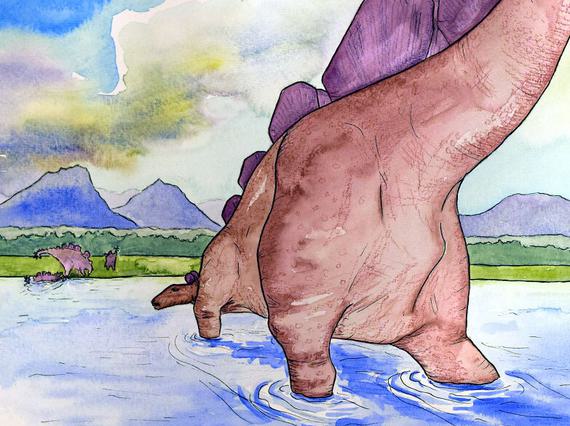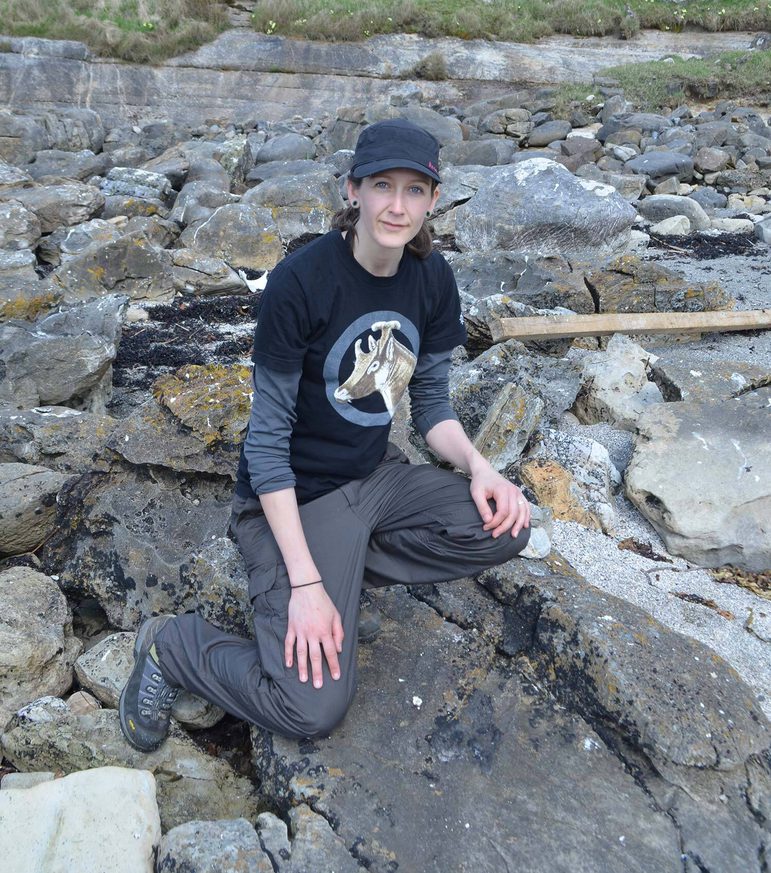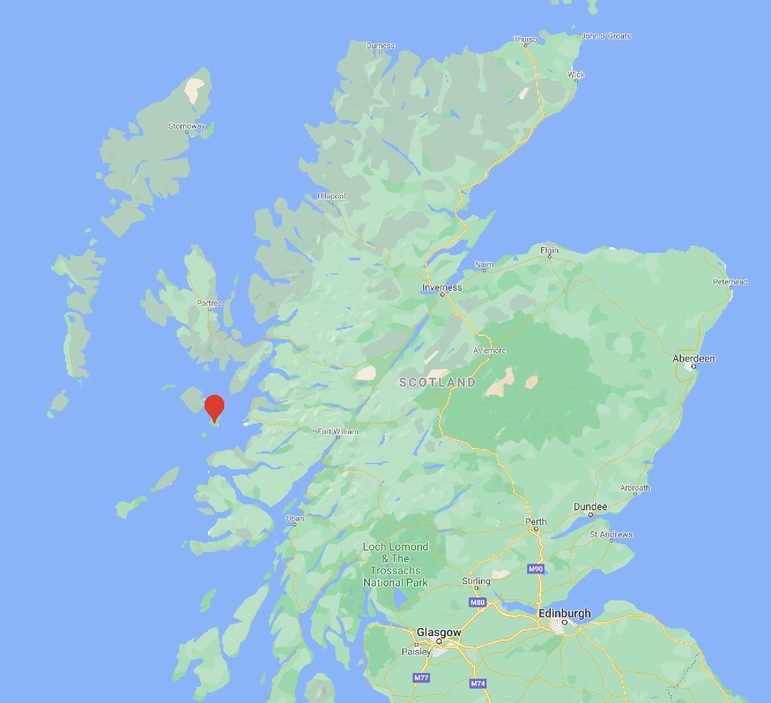
Discovering dinosaur bones on a Scottish island
News Story
Dr Elsa Panciroli was walking along the shore of the island of Eigg when something caught her eye. She had stepped on a boulder, but there was something unusual buried in it.
Dr Panciroli, a Research Associate at National Museums Scotland, was part of a team carrying out fieldwork in the area in 2017. She had been looking for the fossilised remains of early mammals. But what she spotted in the rock wasn’t the sort of animal she had been expecting to find. She had stumbled across the first dinosaur bone ever to be discovered on the island. Before this, the only dinosaur bones found in Scotland were on the Isle of Skye.
Dr Panciroli hadn’t expected it at all. It looked like a dinosaur bone, but she thought it couldn’t be. She remembers going back to the rest of the crew and trying not to use the 'D word'. When the team went to check it out, everyone felt the same; it had to be a dinosaur, it couldn’t be anything else.

The Isle of Eigg
Skye has become a magnet for dinosaur hunters. It is one of the few places where rocks from the Middle Jurassic period are found. These rocks contain the fossils of vertebrates (animals with backbones). Eigg has similar geology to Skye, but despite attracting fossil hunters for over 200 years, nobody had ever found dinosaur bones.

The landscape the Eigg dinosaur once roamed would have looked very different to the island we see today. It would have been humid with a Mediterranean style climate. At that time, the Inner Hebrides were flat with river deltas and lagoons. This meant they were sometimes submerged by rising sea levels.
The team working with Dr Panciroli had hoped to find marine reptiles, invertebrates, and fish. Dr Panciroli studies early mammals so that’s what she had been hoping to find. These specimens tend to be tiny, so she is usually crawling around on her hands and knees with a hand lens. It’s unusual for her to find something so big.
Fossilised bone
The bone was carefully removed from the rock and sent for preparation to Nigel Larkin, a conservator of natural history specimens. Missing fragments of the bone, eroded by the sea, had left indentations in the rock that were used as a cast to help recreate them.
To learn more about the bone, transparent microscope slides were made to examine its structure. Comparing it to other specimens, it's believed to be part of the hind leg of a stegosaurian dinosaur from 166 million years ago. This is the first fossil bone evidence that confirms stegosaurs were living in Scotland at that time. There is further evidence of these dinosaurs in Scotland as stegosaurus footprints have been found on the Isle of Skye.
Analysis of the bone’s structure and layers of bone growth helped identify that the dinosaur was only one or two years old. It’s thought the stegosaur died on the shoreline, or by a river, and was then washed out to sea. Small bite marks spotted on one part of the bone suggest another animal had gnawed on it after its death.

A ground-breaking find
As the first dinosaur discovered in Scotland, out with the Isle of Skye, this is a ground-breaking find. It’s also the first from this group of dinosaurs. Bones from theropods (meat-eating dinosaurs) and sauropods (long-necked herbivores) have been found before, but never one of these. We know it can’t be a Stegosaurus itself (because it’s not quite the right period), but it’s very likely to be a close relative. Beyond Scotland, fossils from land animals in the Middle Jurassic epoch are rare.
Despite her incredible find, Dr Panciroli won't start searching for dinosaur bones. She is more interested in the different animals that lived at the same time as this dinosaur.
The ecosystems that existed on islands Eigg and Skye are very important to understand how the ecosystems of today came to be. Known as the Middle Jurassic epoch, some of the earliest representatives of animals were diversifying. Mammals, lizards, amphibians, and birds were all evolving. The fossils of those animals that lived in the shadow of the dinosaurs are a rare window on a vanished world that would eventually lead to ours.


